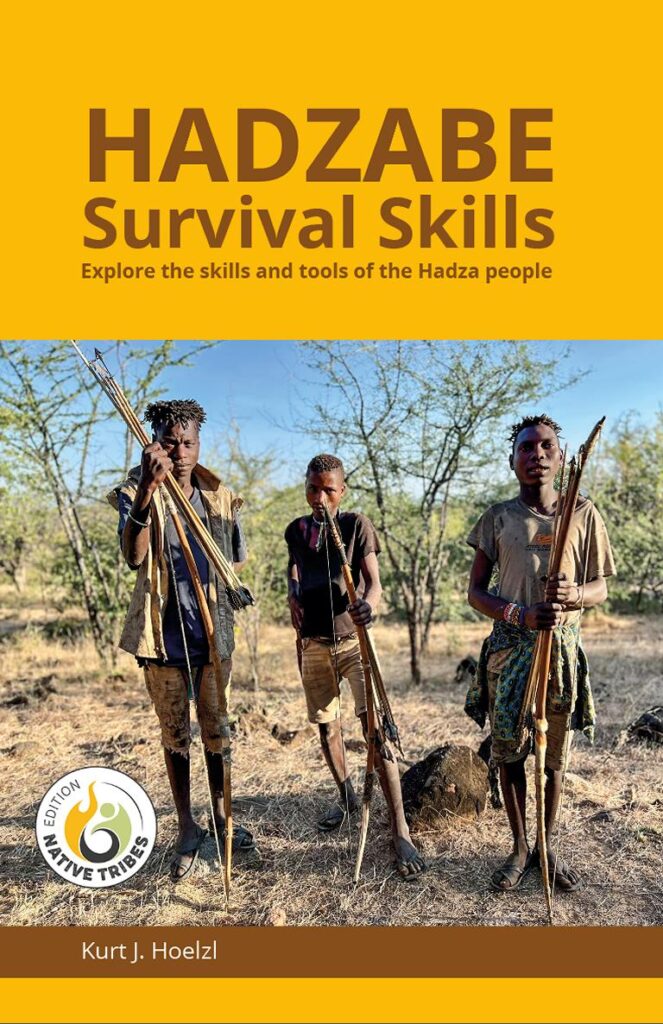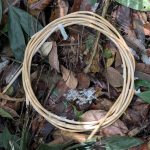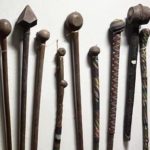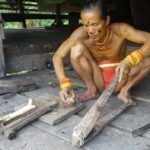These spears have a long history but were replaced for hunting by bows and arrows in modern times. Nowadays, their primary purpose is personal protection against predators when traveling on foot for longer distances. The author encountered a couple of Barabaigs, a subtribe of Datoga people, on the southern shore of Lake Eyasi. The man still carried an original Datoga spear. In the following, we will dig deeper into this exciting piece of equipment.
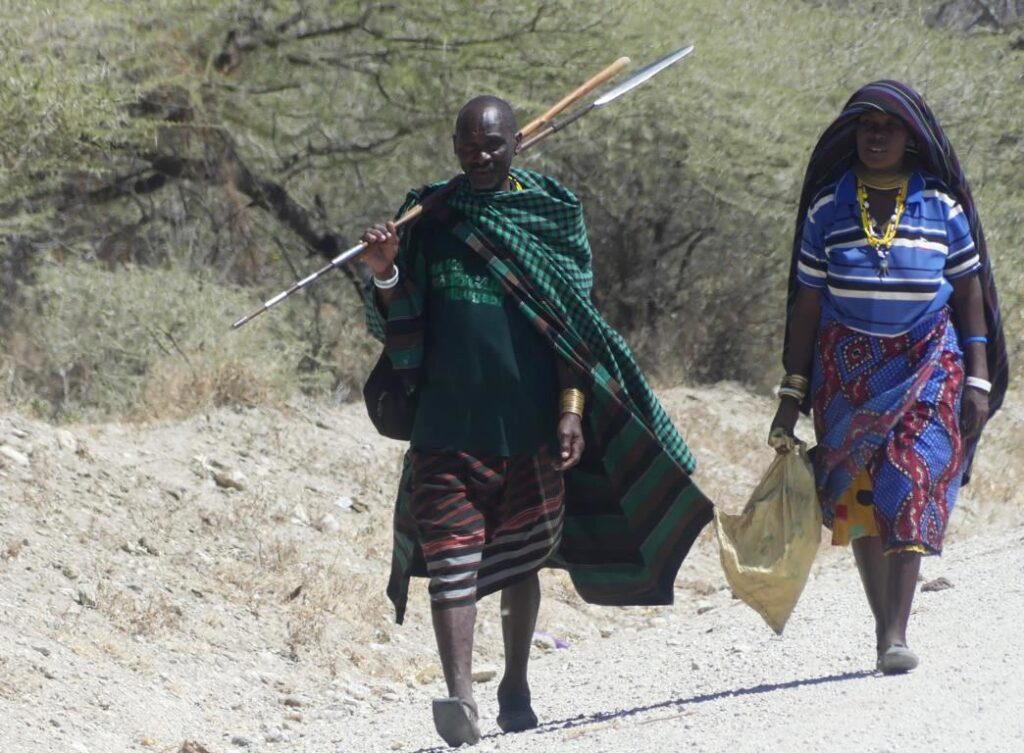
Spearheads for tourists.
Datoga people are famous for their blacksmith skills. They melt steel from scrap iron using goat-skin bellows. Then, they hot-forge these melted steels into implements like arrows and spearheads. Arrowheads are especially sold to Hadza people who are performing for the tourist industry. Real Hadzabe will cold-forge these arrowheads themselves. I was publishing an article about arrowhead making by Hadza people on this website. Furthermore, the arrows themselves were also described.
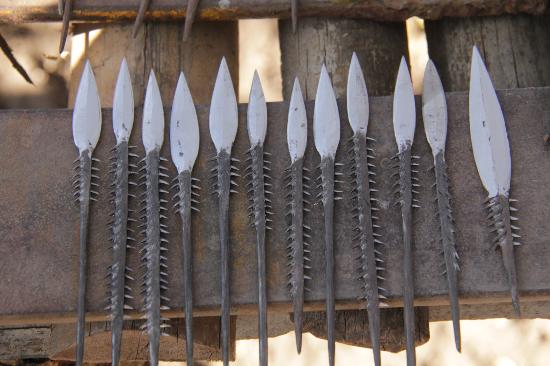
For arrowheads, Datoga people added barbs behind the blade to hold arrow poison for shooting big game. This idea is good, and tourists liked these spiny additions, as they instilled a notion of being wild and dangerous. I was presenting genuine Datoga arrowheads in this article.
Now the Datogas are overdoing it a bit. The barbs are becoming more prominent than necessary for holding the poison. Moreover, the two rows of barbs down the arrowhead’s neck got longer and longer. Again, the tourists like it.
After that, the Datogas scaled up the size of the arrowheads and called this blown-up design ‘spearheads.’ Well, these spearheads have neither any historical background nor practical value. However, the income for the Datogas is higher, as these ‘spearheads’ are larger than the smaller tourist-arrowheads. Furthermore, there is no need to add a spearshaft, which would not fit into the airplane luggage.
In summary, these modern, so-called Datoga spearheads with barbs on the neck are nothing else but useless kitsch for tourists.
History of the Datoga Spear
In the districts around Lake Victoria, three types of spears have been used in history: long-handled spears for war and hunting and short-handled spears in battles. Each tribe had its variation of these general types.
War spears
Broad blades characterized spears used in war against other tribes. These blades easily penetrated thin-skinned humans and opened up blood vessels. With such heavy, hand-held spears, the enemy was primarily injured. After being injured, the enemy would be finished off with either the short-handled spear (Assegai) or a club (Rungu).
Short stabbing spears
Short spears were commonly called Assegai’s and used for stabbing rather than throwing. These spears originated from the Zulu in Southern Africa and made their way up north of the continent. When standing, it was about waist-high and very thin. Some were, therefore, made entirely of iron to prevent it from breaking.
Hunting spears
The hunting spear was used to hunt dangerous game, such as elephants or lions. Its blade was considerably narrower than that of the war spear.
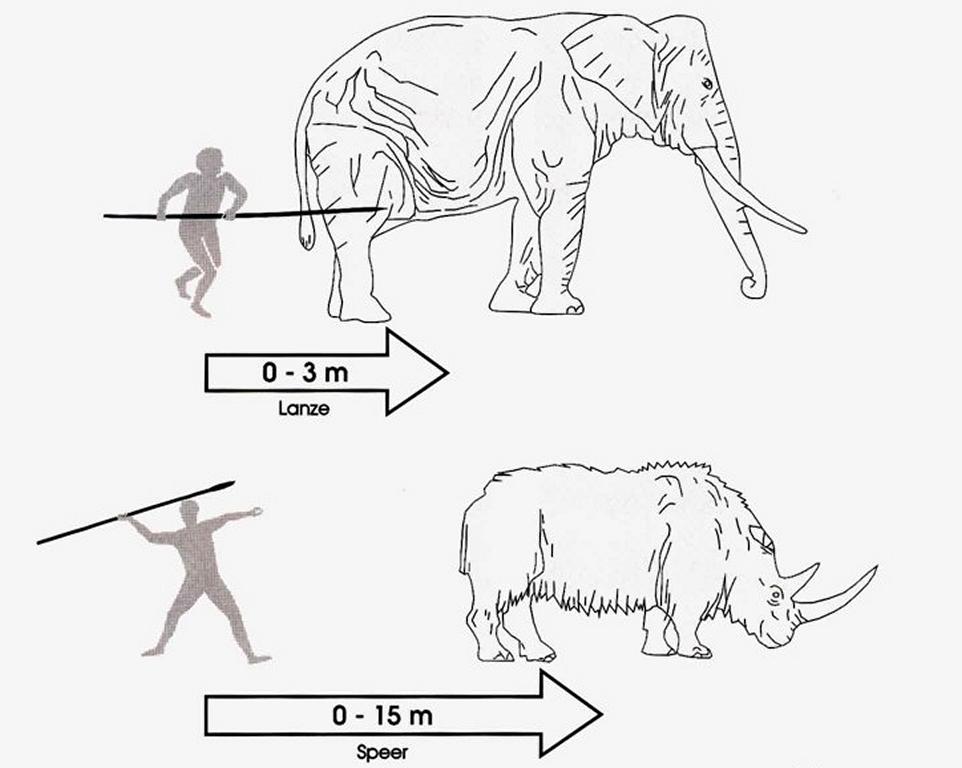
Hunting spears were either used for stabbing at short distances or for throwing these spears at longer distances. In any case, a whole band of hunters needed to attack the game to distract it from focusing on only one person. Besides hunting, these spears were also used for personal defense and as status symbols.
Spears at the Hearst Museum of Anthropology, Berkeley.
Two original hunting spears of the Datoga people are included in the Hearst Museum of Anthropology collection at Berkeley, California. Both spears are typical examples of these weapons.
Spear from Gisadangweda

Iron spearhead length is 44.5 cm / 17.5’’; Total spear length is 184cm / 6ft 0.44’; Shaft thickness in the middle is 1.8cm / 0.7’’. There are three counterweights at the shaft end.
Spear from Gidanwodik at Gilba area

Iron spearhead length is 31.6cm / 12.44’’; Total spear length is 168.2m / 5ft 6.2’’; Shaft thickness in the middle is 1.7cm / 0.67’’. Also, there are three counterweights at the shaft end.
Encounter with Datoga people of the Barabaig subtribe.
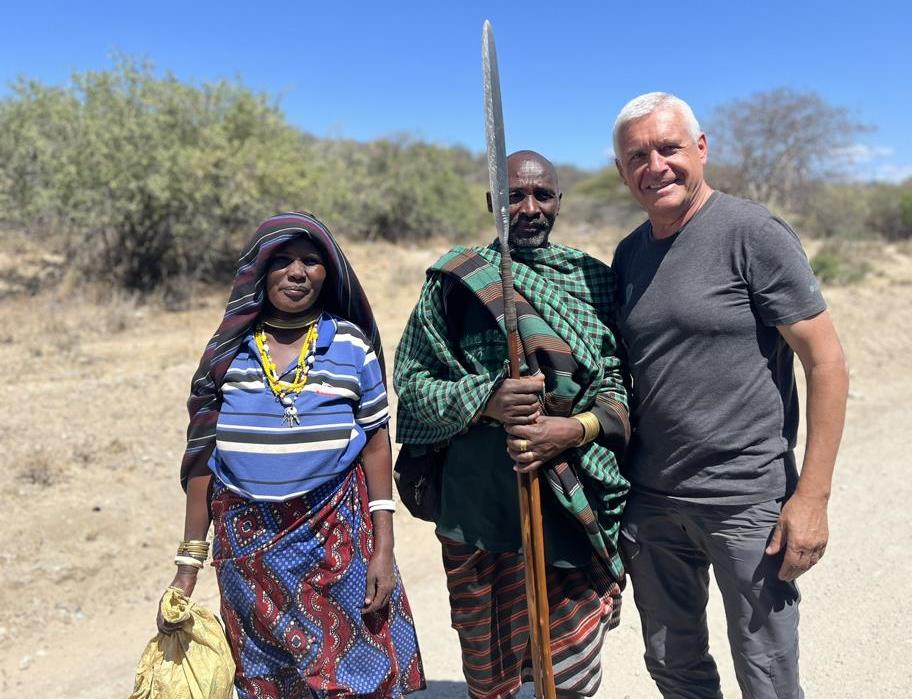
When traveling to a remotely living Hadza clan, we encountered an elderly Datoga husband and wife on the southern road along Lake Eyasi. The husband carried an original Datoga hunting spear and the obligatory cattle herding stick. When talking via our interpreter with them, they told us they had been walking for two days and would have at least one more day to reach family members. He thought I was a bit naive when asked what he needed the spear for. He replied that he had to protect himself from hyenas, lions, and other dangers on their way.
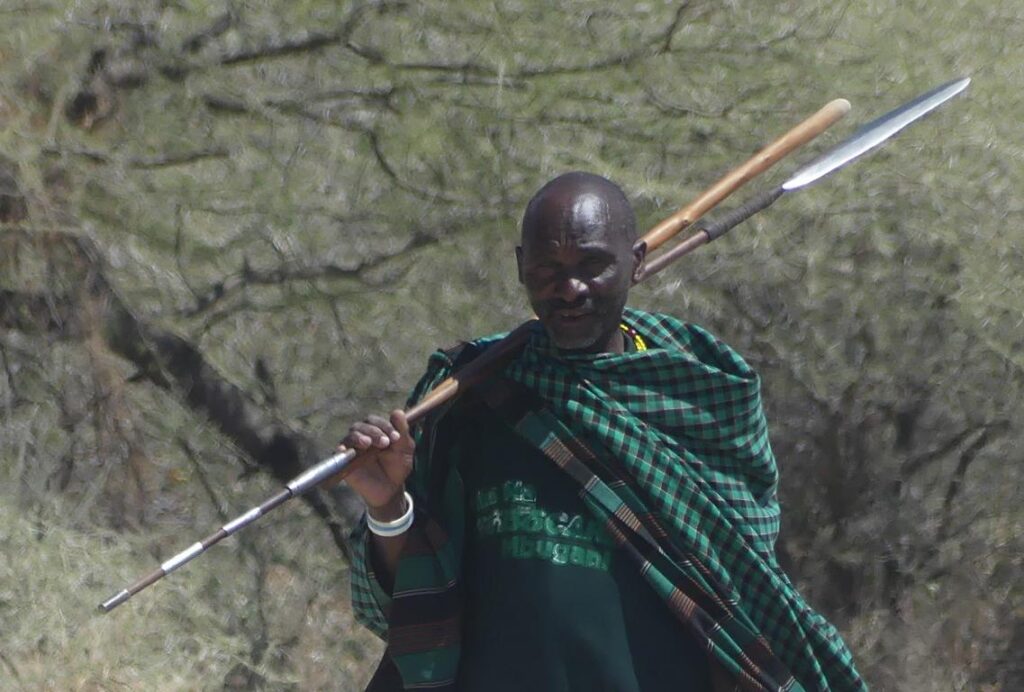
The spearhead was made of steel and about 50cm / 20’’ long. Its overall shape was oblong and softly tapered on both ends. The head was ground on both sides to a sharp cutting edge. No rust could be seen, so it was constantly well-maintained. The hilt of the spearhead stuck in the wooden shaft and was secured with a 20cm / 7 7/8’’ long wrapping of rawhide. The total length of the spear was about 2m / 6ft 6.7’’.
An interesting feature was the counterweights on the shaft end. These were three sections of a steel pipe with a steel endcap. These counterweights ensure a balanced flight when throwing. They avoid the heavy head tumbling over in flight and marginally increase the kinematic energy on impact.
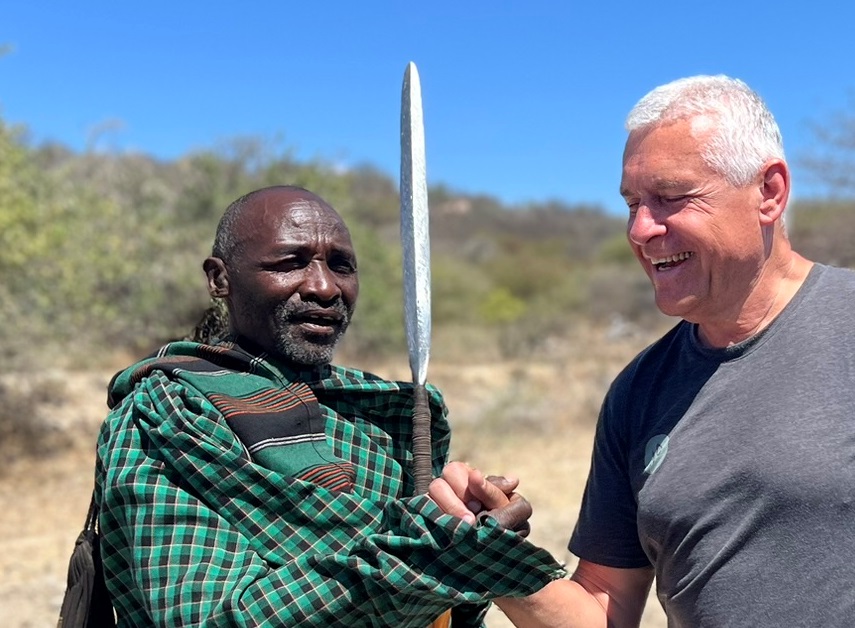
It was good to see that even today (July 2024), Datoge-speaking people of the Barabaig subtribe still use their traditional spears for personal protection. Moreover, they are proud of it.
Lessons learned about these spears:
- Original Datoga spears do not have any barbs between the blade and shaft.
- These hunting spears still have the same shape as they were centuries ago.
- The Hearst Museum for Anthropology in Berkeley was collecting and presents the real stuff.
- Unfortunately, the internet is full of falsified spearheads with no historical background.
.


